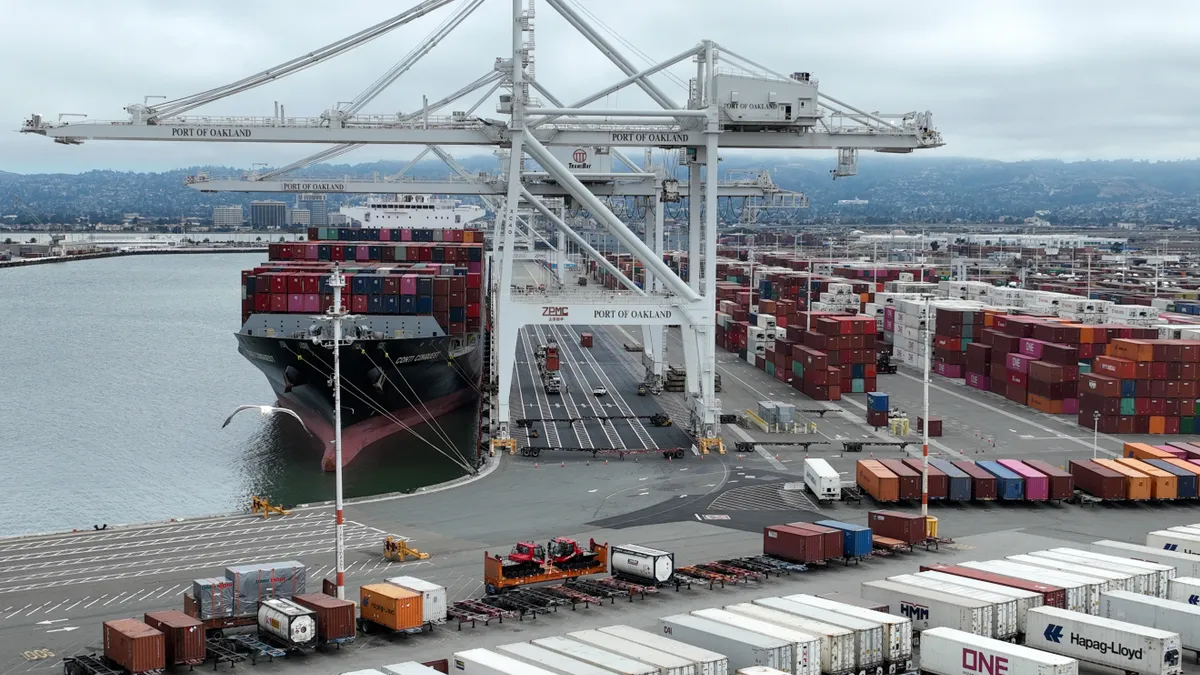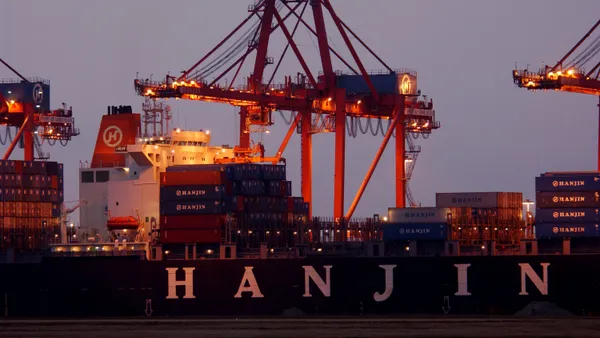Dive Brief:
- West Coast port slowdowns are starting to negatively impact ship wait times, as vessels take longer to load and unload, according to data sent to Supply Chain Dive.
- The number of ships at anchor near many of the coast’s major maritime gateways have risen over the past few weeks, with those near Seattle and the San Pedro Bay reaching high watermarks, according to data from MarineTraffic and Everstream Analytics.
- Meanwhile, median berthing time — the amount of time a vessel is moored while it is loaded or unloaded — was higher in at least the ports of Long Beach and Tacoma during the first two weeks of June than it was the previous two weeks, according to data from project44.
Ships waited longer at berth in first two weeks of June
Dive Insight:
West Coast ports have been hit with a series of disruptions over the past two weeks, causing concern that the interruptions could ripple into larger supply chain issues, like ship backlogs or congestion.
“The ripple effect of these individual actions will contribute to the build-up of container backlogs, and increase yard congestion just ahead of the start to the back-to-school retail shipping season,” Mirko Woitzik, global director of intelligence solutions at Everstream Analytics, said in an email.
So far, ports have not seen widespread congestion, Woitzik said. But he and other analysts said the broader impacts of slowdowns are still occurring.
Adil Ashiq, head of North America West Coast at MarineTraffic, said he hasn’t “seen this many vessels idle in a long time” in Seattle, for example. As of Tuesday, there were seven vessels at anchorage at that port, compared to two a week prior.
Ashiq said he is also watching the number of ships headed towards West Coast ports, which is slated to rise in the coming weeks. Eight ships were headed to Oakland as of Sunday, and more than a dozen were heading to arrive in Los Angeles within the next two weeks.
“There is a big wave of ships on their way so let's see what happens,” Ashiq said.
Jenna Slagle, senior data analyst at project44, said in an email she has not noticed any notable changes to ship schedules yet, but was watching for a potential increase in blank sailings this week.
Slagle also said the visibility provider is watching whether cargo gets diverted, particularly as low water levels in the Panama Canal potentially limit the amount of volume that can traverse the waterway.
“The Panama Canal is a common rerouting option to avoid the West Coast, so shippers are now forced to choose between uncertain labor conditions, lower amounts of TEU volume, or longer trade routes,” Slagle said.
In a Tuesday press briefing, Port of Los Angeles Executive Director Gene Seroka emphasized that supply chain issues remained limited despite June’s disruptions, and cargo continued to flow through the port at healthy levels.
“All in all, given the circumstances, cargo is flowing pretty well," he said.
Editor's note: This story was first published in our Logistics Weekly newsletter. Sign up here.














